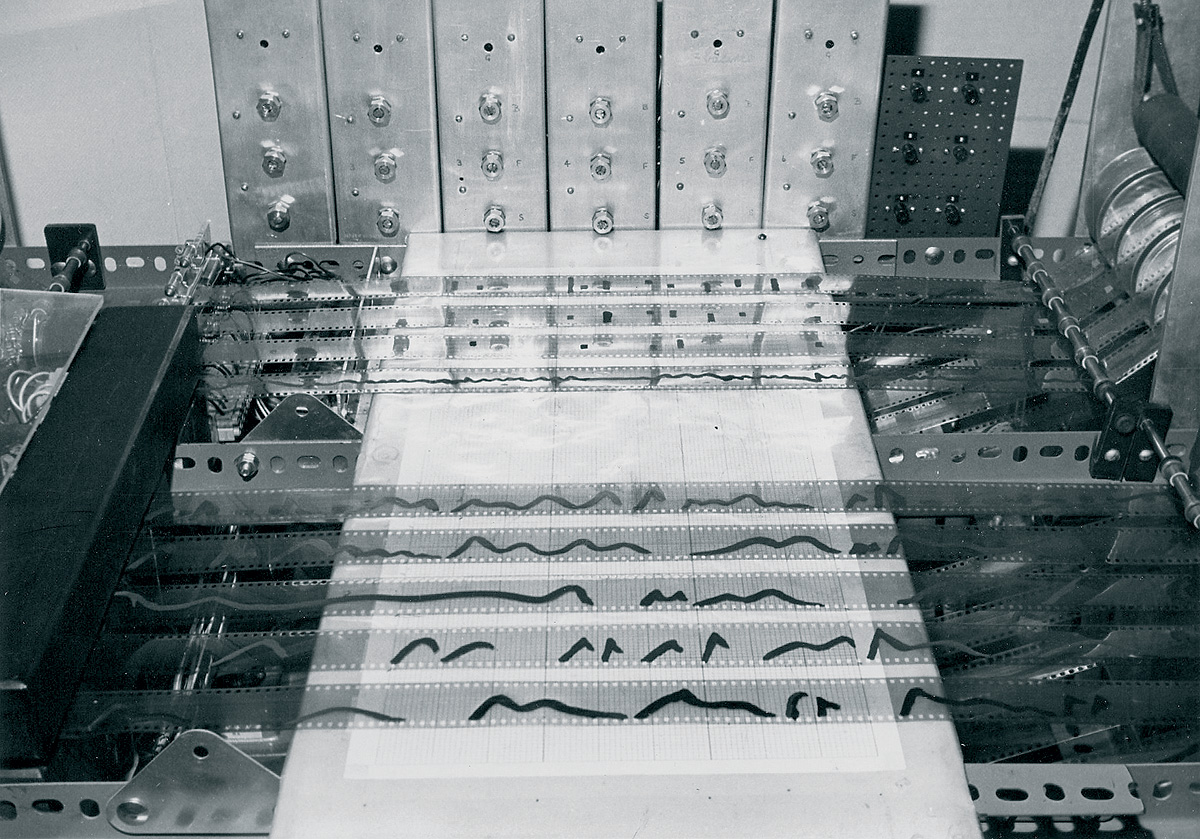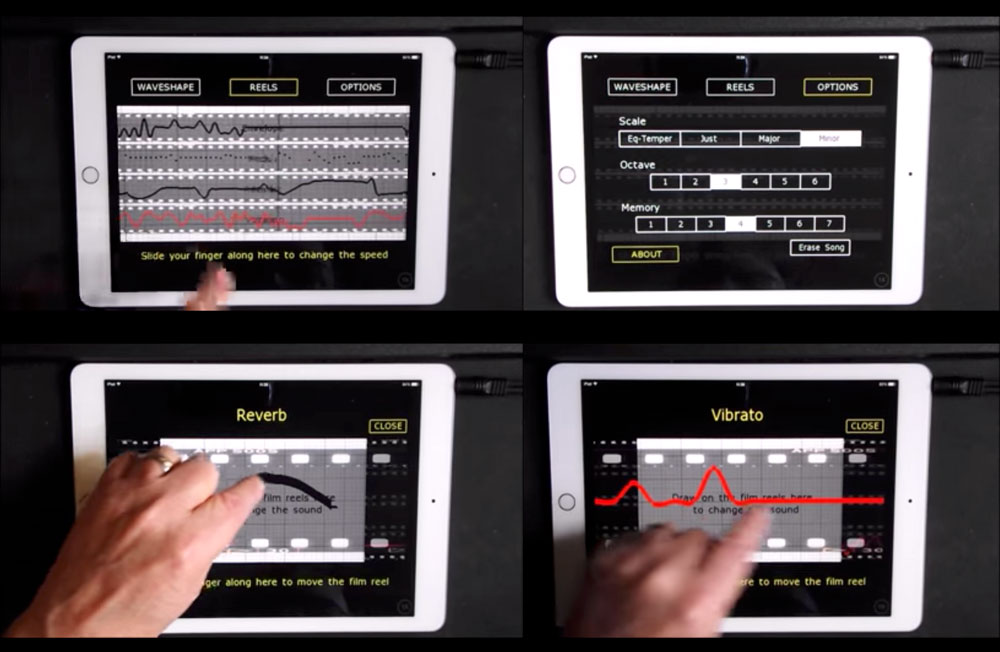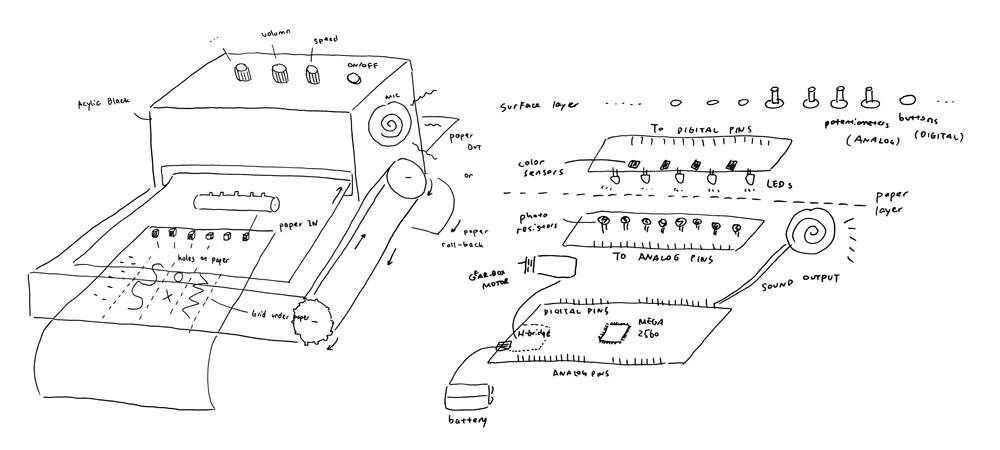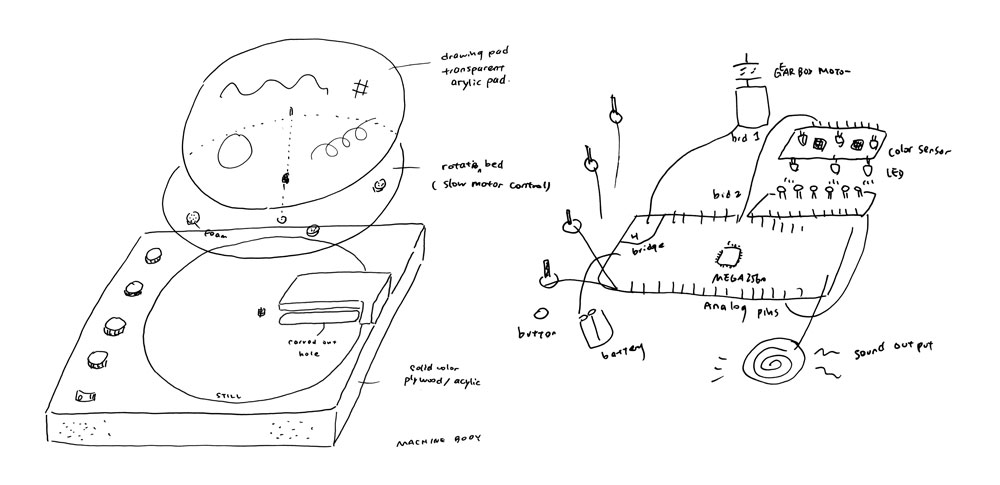12/ applications and implications
This week I am thinking through my final project in details:
To make a Drawing Music Instrument
← previous
→ next
⋯ assignment list
🏁/ final project
Final Project: Drawing Music Instrument (name TBD)
The goal for final project:
My project should incorporate 2D and 3D design, additive and subtractive fabrication processes, electronics design and production, microcontroller interfacing and programming, system integration and packaging. Where possible, I should make rather than buy the parts of your project. Projects can be separate or joint, but need to show individual mastery of the skills, and be independently operable.
What will it do?
It is an visual-audio instrument that takes graphic/drawing as input and translate it into sound/music output.
Who's done what beforehand?
This project is inspired by the Oramics machine created by Daphne Oram in the 1960s. The Oramics machine is one of the first electronic synthezisers and music instruments that turned drawn shapes into sound. It is by the time a new method of music composition and performance. By drawing wave forms or graphic scores on multipule tracks of clear 35mm film and let the stripes go through the scanner, the composer or performer can produce relevant sounds with the hardware.


Interesting thoughts on electronic music and documentation for how the machine works can be found in Daphne Oram's book "An individual note to music sound and electronics".
More recent development of Oramics machine is the Mini Oramics constructed by Tom Richards after 40 years since Daphne Oram's original convention.
Link to the bbc article on Mini Oramics
The video below is a live performance recording of Mini Oramics at Camden Arts Centre.
Since the Oramics Machine is at large scale, fragile and requires maintenance, it is not generally accessible. Other than seeing the machine at museums, one can now download phone and tablet Apps that run Oramics Machine’s operation on a touch screen :D Users can adjust waveforms, modify different parameters to create unique sound pieces.

Screenshots above come from this video The Oramics Optical Synthesizer App, Demo for iPad or iPhone
What will you design?
Base on the principle and machanics of the Oramics Machine, I will design a similar drawing music instrument that allows user to draw graphics by freehand as input and have instrument produce sound accordingly.
This instrument will be built at a small desktop scale for individual use. It will be portable and can be brought to different situations for entertainment or live performance. Other than one-time live drawing live sound making, the instrument can also run previously drawn scores with recorded settings, just like playing a music tape or vinyl. The drawings will be made on a whole sheet of plastic or arylic boards other than seperate film tracks, and can be presereved as an art piece by itself.
While keeping or retriving the fun of making physical drawing, I will update the digital application with modern technology :D The electronics part functions as the Oramics Machine. The drawing blocks light casted onto the sensors; sensors react to the interruption and send signals to MCU. With the help of powerful audio-visual applications like Max, I can turn the signals into digital sound forms. Thus the instrument will be able to read the graphics according to programmed rules, however, randomness is embraced :D The emphasis is placed more on the the fun process of creating sound than producing precise music notes here.
Since I have only limited amount of time but a big plan, I break the project down into parts, from core to will-be-cool-if-I-can-have, in the idea of spiral development:
- 1. the instument reads black and white graphics
- 2. an desktop App to control sound parameters build with Max
- 3. *the instrument could read color difference
- 4. *additional function like adjusting pitch, volume and intensity
- 5. ***more complicated, customizable application in Max

Here are two sketches I made for the machine, same idea different forms. I like the sketch below better because it will be cool to produce acrylic "vinyls" that the drawings on the surface actually affect sound :D

What materials and components will be used? Where will come from? What parts and systems will be made?
Electronics: (mostly from taobao, some from lab stock)
- – 15 phototransistors/photoresistors
- – 5 color sensor chips
- – 12 white LEDs (taobao)
- – 1-2 slow motor/gear-box motor
- – 4-5 potentiometer
- – 4-5 button/on-off switches
- – 1 microphone
- – battery or power cable
- – ATmega2560 chip
- – PCBs mill and solder in Fab lab
- – other supportive components and wires
Box/case:
- – laser cut acylic board (taobao) for outer case
- – 3D printed PLA material for small connection parts
Transparent sheet:
- – plastic sheet (taobao)
- – holes on sheets punched by hand with hole puncher or vinyl cut
- – or transparent arylic boards 3mm (taobao)
- – arylic boards will be laser cut
- – color markers to draw (taobao)
How much will they cost?
- – 5 color sensor chip (and module for test): 100 RMB
- – ATmega2560 chip: 25 RMB
- – 2 gear-box motor: 40 RMB
- – other small sensors and electronic components: 50 RMB
- – 10 arylic sheets 3mm 200x300mm: 120 RMB
- – transparent sheet roll: 30 RMB
- – color markers: 20 RMB
- – *hole puncher: 20 RMB
- Altogether around 400 RMB (60 USD)
What processes will be used?
- – electronic design and production for PCBs
- – laser cutting for case
- – 3D modeling and printing for small parts
- – application design
What questions need to be answered?
- 1. What are the proper light sensors to use?
- 2. Which motor and power level should I choose?
- 3. How to have as many analog pins available as possible?
- 4. How to simplify the structure? make it reproducable and portable?
- 5. What are the parameters to set for the sound output?
- 6. How to import different data into Max? to read analog and digital input at the same time?
- 7. What kind of speaker to use for sound output?
How will it be evaluated?
- 1. Is the instrument able to read different graphic inputs?
- 2. Does the sound output match with the input? How precise is it?
(Updated 06.05.2019)